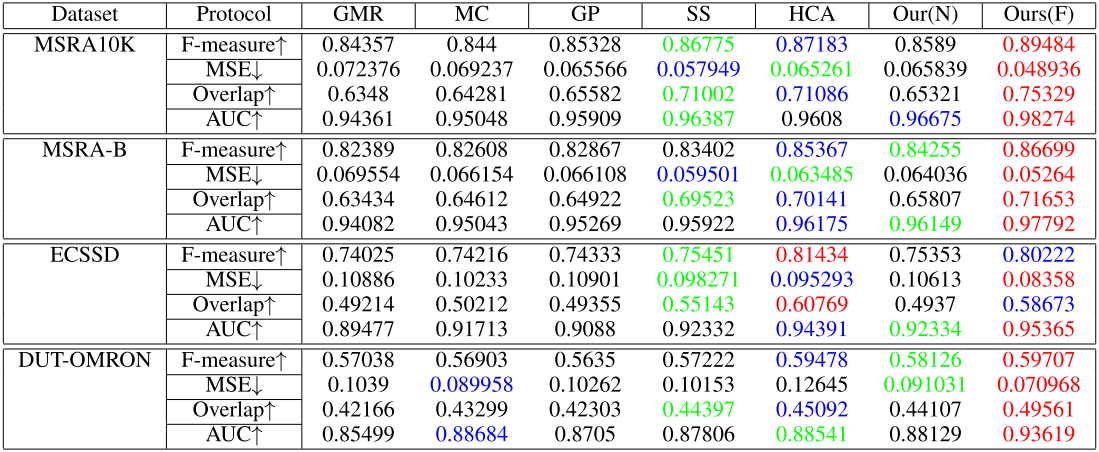Peng Jiang, Zhiyi Pan, Changhe Tu, Nuno Vasconcelos, Baoquan Chen, and Jingliang Peng
In this work, we firstly present a novel view of the working mechanism of the diffusion process based on mathematical analysis, which reveals that the diffusion process is actually computing the similarity of nodes with respect to the seeds based on diffusion maps. Following this analysis, we propose super diffusion, a novel inclusive learning-based framework for salient object detection, which makes the optimum and robust performance by integrating a large pool of feature spaces, scales and even features originally computed for non-diffusion-based salient object detection.
For each dataset and protocol, the top three results are highlighted in red, blue and green, respectively. The ↑/↓ sign indicates that the value is positively/negatively related with the performance.
Tabel 1. performance statistics of unsupervised algorithms Tabel 2. performance statistics of supervised algorithms-
Preparation:
-
Clone the repository. This code is tested on the MATLAB R2017a.
-
Run the make.m in EntropyRateSuperpixel and put the
mex_ersin root folder. -
addpath('./others/')
-
-
Dataset
Download the MSRA10K and change the
imgRootto your MSRA10K path inSuperDiffusion.m. -
Evaluation
-
Change the
saldirto your save folder inSuperDiffusion.m. -
Put the
./weight.matin your save folder. -
run SuperDiffusion.m
-
-
Training
-
Change the
saldirto your save folder inSuperDiffsion.m. -
If you want to use saliency features computed by other methods as input, put features in
./otherfeatureand change theargs.otherfeatureinSuperDiffusion.m. -
run SuperDiffusion.m
-
If SuperDiffusion is useful for your research, please consider citing:
@article{DBLP:journals/tip/JiangPTVCP20,
author = {Peng Jiang and
Zhiyi Pan and
Changhe Tu and
Nuno Vasconcelos and
Baoquan Chen and
Jingliang Peng},
title = {Super Diffusion for Salient Object Detection},
journal = {{IEEE} Trans. Image Processing}
}

